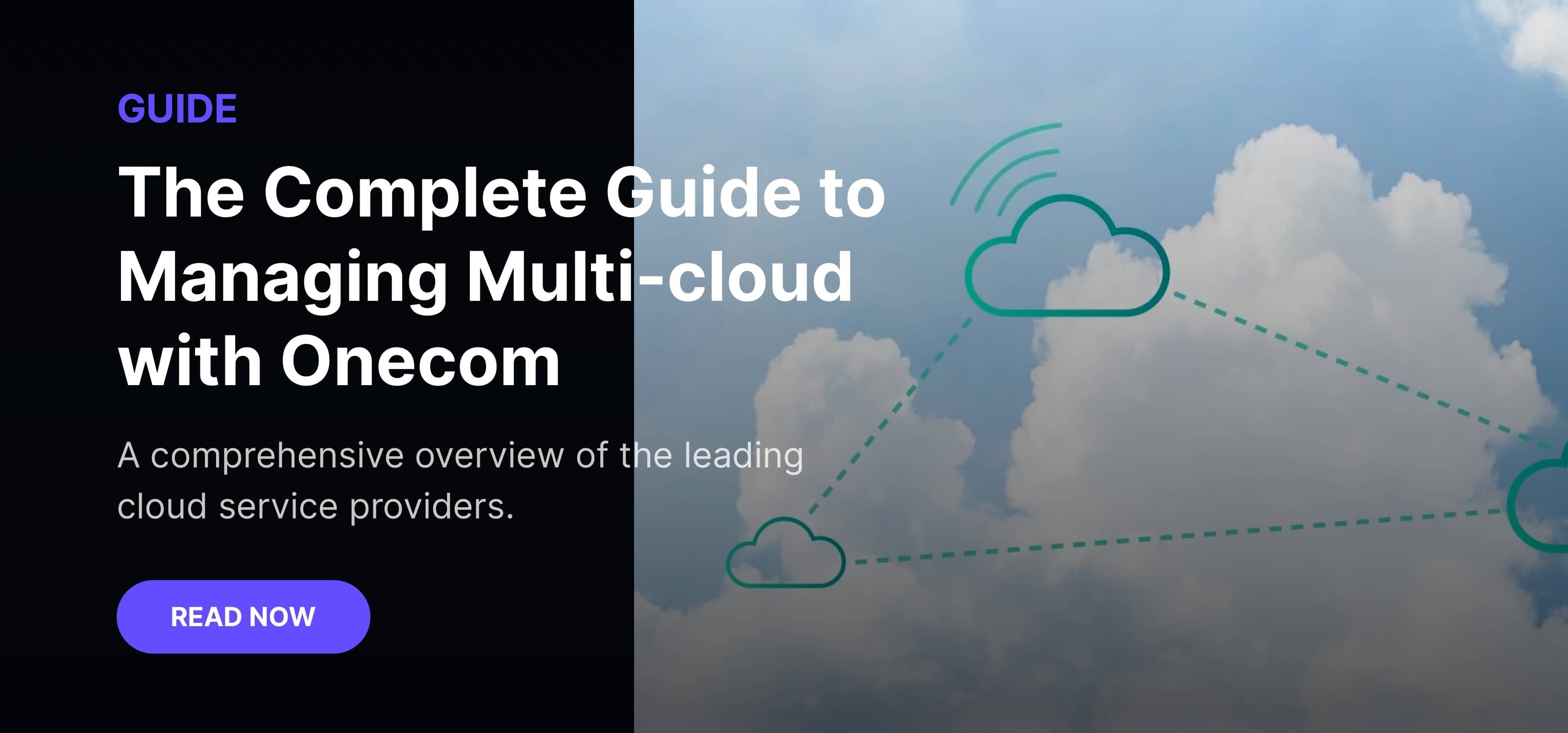The popularity of on-premises and single cloud solutions has waned in recent years. To maintain the agility, flexibility, and scalability that modern businesses demand of their IT infrastructure, multi-cloud solutions have risen in favour.
Not to be confused with hybrid cloud, multi-cloud describes a solution that allows you to draw on the best features of multiple cloud service providers (CSP). For example, if you were developing a new app, you might choose to build it on Amazon Web Services (AWS), but use the Google Cloud Platform’s (GCP) unparalleled machine learning capabilities to optimise it.
On paper, this looks like the ideal business cloud solution. It gives you access to the very best services and aren’t restricted by the limitations of a specific provider. But, a multi-cloud environment can grow out of hand quickly. Complexity and costs increase, undermining the very principles of agility and flexibility upon which the cloud was founded.
Because of this, enterprise operations now leverage the benefits of cloud consolidation.
What is Cloud Consolidation?
Cloud consolidation is process of taking the disparate applications, assets, and resources that comprise your multi-cloud estate and merging them into one.
The benefits of this approach are clear cut. Rather than trying to manage each vendor separately, you gain an unobstructed, birds-eye view of your entire estate. This makes it far easier to manage on a day-to-day basis, for one thing. But is also:
- Provides enhanced agility and scalability
- Increases visibility into your IT infrastructure
- Gives you greater control of cloud costs
- Simplifies security and compliance
The 3 Main Benefits of Cloud Consolidation
Visibility
It can be difficult to maintain visibility and transparency when you operate in a multi-cloud environment. When your IT infrastructure incorporates multiple services from multiple providers, you’re forced to flit between separate dashboards. Getting a clear view of who’s responsible for what and keeping track of changes becomes a time-consuming and costly headache.
You can eliminate much of that complexity if you consolidate your resources within a single dashboard. This enables you to closely monitor your portfolio of services and providers from a centralised location. You can also automate assets to enhance workload security and performance, further reducing the complexity of your multi-cloud environment – as well as identify and implement best practice processes.
Cost Control
Increased visibility feeds directly into the second key benefit of cloud consolidation: cost control.
On average, enterprises waste approximately 30% of their cloud spend. And, as multi-cloud environments grow ever more complex, it’s only going to become harder for enterprises to keep track of their costs. At the very least, it’s a time-consuming distraction that prevents you from focusing on more pressing tasks. At worst, you're missing out on opportunities to optimise, reallocate resources, and reinvest cloud spend.
A consolidated cloud allows you to monitor your IT spend from a single location. You can see exactly where you’re allocating resources and what you’re getting in return. Some cloud consolidation platforms utilise AI and machine learning capabilities to make the process even more efficient. They monitor resource usage to ensure you’re not overpaying on critical services or shelling out for inefficient or obsolete applications. This enables you to take full advantage of the pay-as-you-go methodology that’s such a crucial part of the modern cloud.
Security and Compliance
Security is often the biggest concern for enterprises that are in the process of (or are thinking about) migrating their business infrastructure to the cloud. 59% of executives and enterprise staff highlight it as a major issue. This is particularly true if they’re adopting a multi-cloud approach.
Multi-cloud environments are, by their very nature, a complex mixture of services and end-points managed through a combination of public and private CSPs, web-enabled smart devices, and employee-owned systems. But data security isn't solely the responsibility of the CSP. It's down to both parties (client and provider) to implement policies and processes that deliver the required level of security.
As such, it can be difficult to keep on top of your compliance requirements and ensure data and business-critical systems are secure in a multi-cloud environment. You can’t afford to ringfence your network. If you do, you’re severely limiting the flexibility and accessibility that makes the cloud such an attractive prospect in the first place. This will inevitably impact on productivity.
A consolidated cloud offers the best of both worlds. You can continue to employ best practice security protocols (two-step authentication, encryption, the principles of least privilege etc.) with minimal duplication of effort. But, because you’re able to monitor compliance from a centralised platform – regardless of how many CSPs form your estate – you don’t have to worry about managing and reporting on each asset individually. This also makes it easier to monitor compliance, reducing the risk that you might inadvertently find yourself running an application in an unapproved environment.
Why Choose Onecom for Cloud Consolidation?
Amazon, Google, and Microsoft control almost 70% of the cloud market – and there’s reason to believe this figure is only going to increase. But that doesn’t mean multi-cloud environments are becoming less complex. It’s quite the opposite.
The volume of resources, assets, technologies, applications, and services that comprise multi-cloud environments continues to expand. So much so that today, cloud consolidation is a necessity for forward-thinking enterprises.
The Onecom OneCloud CMSP is designed to meet this need.
Delivered as a single cloud service, OneCloud brings together best-in-breed applications from market-leading CSPs. Supported by cloud experts, we give you the tools you need to succeed. No matter how complex your technology infrastructure, we enables you to realise the benefits of a multi-cloud approach, while maintaining the flexibility, simplicity, and control of a single cloud solution.


